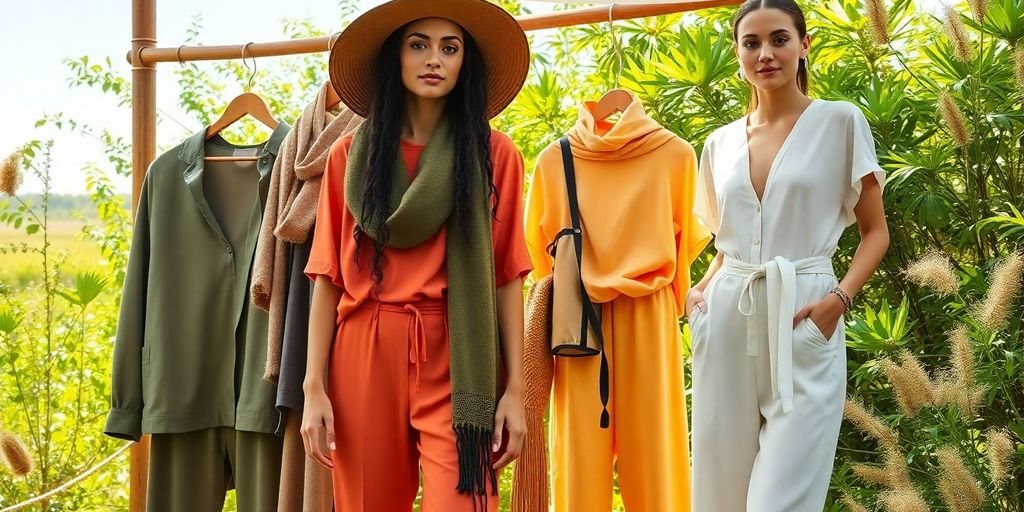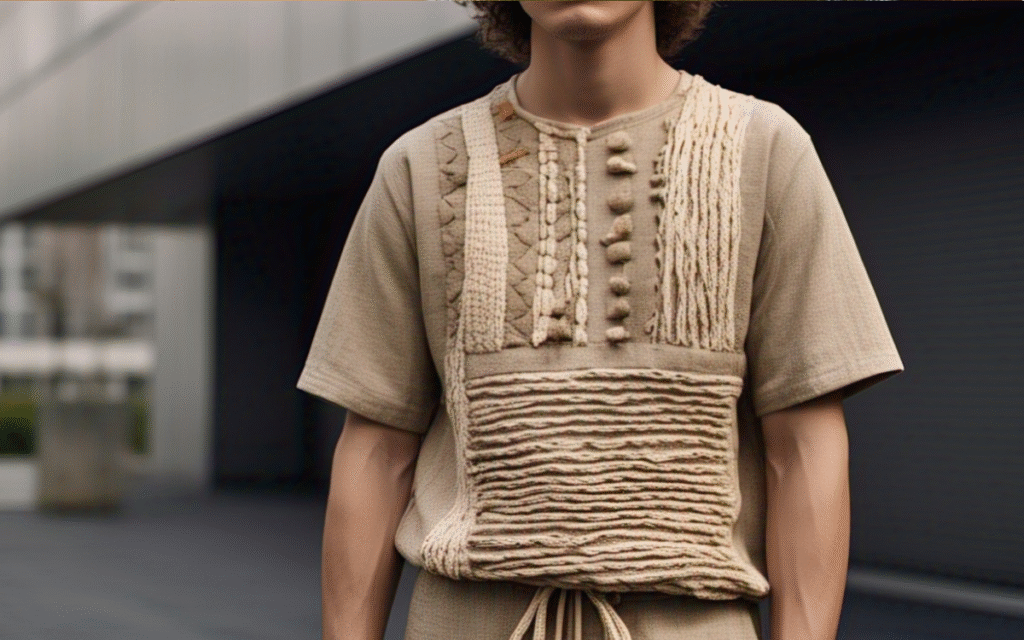The fashion industry is shifting, and eco-friendly clothing is leading the way. As more people become aware of how their clothing choices impact the environment, there’s a growing push towards sustainable fashion. This article will explore the importance of eco-friendly clothing and how you can build a wardrobe that’s stylish and kind to the planet.
The Rise of Sustainable Clothing

Fashion is changing, and it’s not just about trends anymore. People are starting to care more about where their clothes come from and how they’re made. Sustainable clothing is becoming more popular, and that’s a good thing! It’s all about making clothes in a way that’s better for the planet and the people who make them. It’s a big shift from the days of fast fashion, where clothes were cheap and disposable.
Understanding Eco-Friendly Fashion
So, what exactly is eco-friendly fashion? It’s about looking at the whole process of making clothes, from the materials used to how they’re made and shipped. It means using materials that are better for the environment, like organic cotton or recycled fabrics. It also means using less water and energy in the manufacturing process. And it means treating workers fairly and paying them a living wage. It’s a big picture kind of thing.
The Key Principles of Sustainable Fashion
There are a few key ideas behind sustainable fashion:
Use better materials: This means choosing fabrics that are grown or made in a way that’s better for the environment. Think organic cotton, hemp, or recycled materials. Sustainable shopping is easier when you know what to look for.
Reduce waste: Fast fashion creates a lot of waste. Sustainable fashion is about making clothes that last longer and can be recycled or upcycled when you’re done with them.
Fair labor practices: It’s important to make sure that the people who make our clothes are treated fairly and paid a living wage. No one wants to wear something that was made by someone who was exploited.
Sustainable fashion isn’t just a trend; it’s a way of thinking about clothes differently. It’s about making choices that are better for the planet and the people who live on it. It’s about buying less, buying better, and making your clothes last longer. It’s a win-win for everyone.
Here’s a quick look at some popular eco-friendly fabrics:
| Fabric Type | Benefits |
|---|---|
| Organic Cotton | Grown without harmful pesticides |
| Tencel | Made from sustainably sourced wood pulp |
| Recycled Polyester | Made from recycled plastic bottles |
Why Sustainable Clothing Matters for Our Planet

It’s easy to get caught up in trends, but let’s talk about something way more important: why what we wear matters to the whole planet. The fashion industry? It’s a big deal, and not always in a good way. Think about all the resources, the waste, and the impact it has. That’s why switching to sustainable clothing isn’t just a nice idea, it’s kind of a must.
Environmental Impact: Reducing Carbon Footprint
Okay, so the fashion industry is responsible for a HUGE chunk of global carbon emissions. I’m talking about a percentage that’s hard to ignore. Fast fashion is a big part of the problem, with its quick turnover and cheap materials. But here’s the thing: by choosing sustainable clothing, we can actually help shrink that carbon footprint. It’s all about eco-friendly materials and processes that use less energy. It’s a real game-changer.
- Eco-friendly materials reduce emissions.
- Energy-efficient processes lower the carbon footprint.
- Sustainable practices promote a healthier planet.
Sustainable clothing isn’t just a trend; it’s a necessity for a healthier planet.
Water Conservation: The Thirsty Fashion Industry
Did you know that the fashion industry is a HUGE water hog? Seriously, it’s one of the biggest consumers out there. And textile dyeing? It’s a major source of water pollution. Sustainable clothing eco-friendly clothing practices aim to conserve water by using less of it during production and choosing materials that don’t need as much water to grow. It’s a big deal for protecting our water resources. We need to support brands that prioritize fashion sustainability in their operations.
Here’s a quick look at water usage:
| Process | Water Usage (approximate) |
|---|---|
| Cotton T-shirt | 2,700 liters |
| Pair of Jeans | 7,600 liters |
| Conventional Dyeing | High |
Switching to sustainable options can significantly reduce these numbers. It’s about making smarter choices for a greener future.
Embracing Eco-Friendliness: Steps to Transition to a Sustainable Wardrobe

Okay, so you’re thinking about making your closet more eco-friendly? Awesome! It’s not about throwing everything away and starting over. It’s more about making smarter choices moving forward. It’s a journey, not a race, and every little bit helps. Let’s break down some easy steps to get you started.
Curating an Eco-Friendly Fashion Palette: Discovering Alternatives
First things first, let’s talk about what you can buy. It’s all about finding those eco-friendly alternatives.
Look for materials like organic cotton, hemp, and recycled fabrics. These are way better for the planet than traditional materials.
Consider the dyes used. Natural dyes are a great option.
Think about where the clothes are made. Supporting local or fair-trade brands can make a big difference.
It’s about being mindful of the impact your clothes have, from the materials they’re made of to the people who make them.
Key Sustainable Brands to Explore
Finding brands that align with your values is key. Not all brands are created equal, and some are way more committed to sustainability than others. Do your research! Transparent brands are usually happy to share their practices. You can find sustainable and ethical brands that fit your style and budget.
Here’s a quick look at some brands known for their eco-friendly efforts:
| Brand Name | Focus |
|---|---|
| Patagonia | Recycled materials, fair labor practices |
| Eileen Fisher | Organic fibers, responsible manufacturing |
| People Tree | Fair trade, organic cotton |
Remember, building a sustainable wardrobe is a process. Start small, do your research, and choose pieces that you love and will wear for a long time. It’s about eco-friendly fashion choices that make you feel good, inside and out.
Wrapping It Up: A Greener Future in Fashion
In the end, embracing eco-friendly fashion is more than just a passing trend; it’s a choice that can really make a difference. As we become more aware of how our clothing choices affect the planet, it’s clear that we need to rethink our shopping habits. By opting for sustainable brands, we’re not just making a style statement—we’re also doing our part to protect the Earth. Sure, it might take some effort to shift away from fast fashion, but the rewards are worth it. Together, we can create a future where fashion is not only stylish but also kind to our planet. Let’s keep pushing for a world where looking good doesn’t come at the expense of the environment!
Frequently Asked Questions
What is sustainable fashion?
Sustainable fashion is about making clothes in a way that is good for the environment and fair to workers. It focuses on using safe materials and practices that help protect our planet.
Why is sustainable clothing important?
Sustainable clothing is important because the fashion industry causes a lot of pollution and waste. By choosing eco-friendly clothes, we can help reduce our carbon footprint and protect natural resources.
How can I start building a sustainable wardrobe?
To build a sustainable wardrobe, start by buying clothes made from eco-friendly materials, shopping second-hand, and supporting brands that prioritize ethical practices. Also, take care of your clothes to make them last longer.